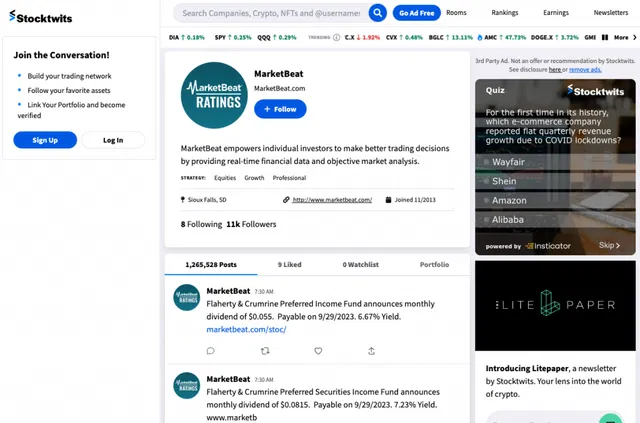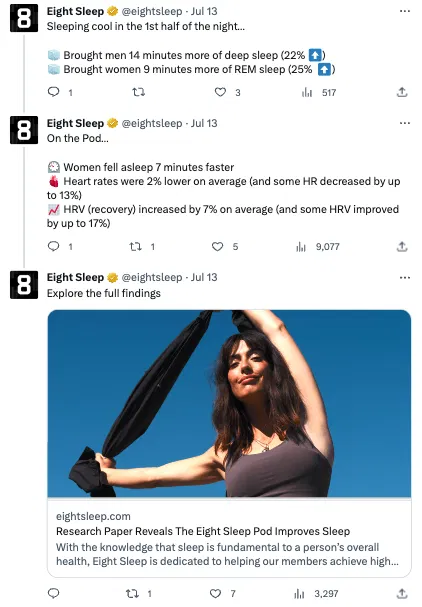Statistical data shows that, as of April 2023, the worldwide digital population consists of 5.18 billion internet users. And 4.8 billion of those are on social media. Considering that this makes up 59.9% of the world’s population, it instantly becomes evident that social media should be an irreplaceable part of any brand’s marketing strategy.
But what role does social media play in inbound marketing?
Well, in addition to being an amazing platform for content distribution (which is essential in a world where people spend, on average, 2 hours and 26 minutes using various social networks), social media marketing is also a great way to earn your target audience’s attention without having to invest in high-cost campaigns targeting consumer in the mid-to-lower stages of the buyer’s journey.
So, if you’re searching for a way to maximize your inbound marketing ROI, you might want to focus some of your attention on building a presence on the social networks your target audience already populates. Here are the top reasons why social media marketing is an important part of your inbound marketing efforts, along with some great examples.
1. It’s Where the Buyer’s Journey Often Begins
As you explore the potential of social media to boost your inbound marketing results, you have to remember why people go on social networks in the first place. Sure, there are the standard reasons, like keeping in touch with friends and family and curing boredom. But data also shows that many people go on social media to:
- Find inspiration for things to do and buy (26.4%)
- Discover new products to purchase (26.0%)
- See content from their favorite brands (22.2%)
In other words, social media has transformed from an online space for socialization into a search engine. So, if you’re exploring methods to support your inbound marketing efforts, you must publish content in these spaces. There are many social media automation tools to help with this content and boost your inbound marketing.
For instance, if you’re trying to attract people in the top-to-mid stages of the buyer’s journey, you can take inspiration from ShopSolarKits. This ecommerce brand has a great YouTube channel. It regularly publishes content for prospects interested in solar panels who still don’t understand every aspect of powering their homes through this sustainable energy choice.
Federal Solar Tax Credit Guide – How it Actually Works & What You Need to Know
Source: youtube.com
2. Establish Brand Authority and Credibility
Branding plays a huge part in allowing businesses to attract high-quality leads. It’s partly because of the mere exposure effect, which causes consumers to opt for solutions made by specific brands they are already familiar with. Plus, your brand’s reputation also influences the likelihood of your target audience choosing to invest in your products.
For instance, research shows that people often base their purchase behavior on brand trust. And knowing that the two main elements of trust include ethicality and competence, using social media to position your business as an entity your target audience can rely on is a great way to engage more customers.
For example, if you check out MarketBeat, you’ll see that it’s a brand that sells a subscription service. However, to prove to its audience that it offers unmatched information quality, the brand populates its website and social feeds with valuable information, like the bite-sized dividend info it provides on its StockTwits profile (a social network aimed specifically at investors looking for expert tips).

Source: stocktwits.com
3. Engage Your Audience and Shorten the Buyer’s Journey
Did you know the average number of consumer-brand interactions needed to convert a prospect is eight touches? That’s right, the buyer’s journey often tends to be a lengthy ordeal. However, one of the biggest benefits of creating content for social media is that it allows you to open up space for additional interactions with your target audience in an online space they already frequently visit.
This means that once you’ve grabbed your potential customer’s attention, you can continue presenting them with relevant, high-quality social media content to encourage them to interact with your brand, learn more about your solutions, and, ultimately, decide to invest in your products or services.
For example, if you check out FOCL, you’ll see that it’s a brand that presents itself as a maker of premium plant-powered wellness supplements. Yet, knowing that many people aren’t completely open to experimenting with CBD and other adaptogens, it uses social media to present its audience with educational content. Thanks to this approach, FOCL’s followers don’t need to spend hours researching stress-fighting solutions. All they need to do is continue their regular scrolling activities. During that time, the brand’s content delivers bite-sized pieces of info that slowly present the benefits of CBD, gently convincing prospects to try them out.
Or, if you’re looking at the long-term benefits of social media as a format of inbound marketing, you can also use these platforms to encourage audience engagement and involvement.
Something as simple as asking your followers to share their favorite recipes that use your products, as Transparent Labs does in marketing its Whey Protein Isolate, can be a super-effective method of engaging your customers and keeping your product at the forefront of their attention. Even more importantly, it’s essential to remember that positive brand interactions actively contribute to a good customer experience. And that, in turn, supports customer loyalty and lifetime value.
4. Get the Most Out of Your Distribution Channels
Good social media content will make your followers stop scrolling. But if you manage to produce something great, it could just turn out to be the key to organically boosting SEO.
You see, using social channels for SEO purposes works wonders. And not just because it allows you to reach your audience without waiting for them to perform a Google search related to your brand, services, or products. More importantly, the potential of utilizing social media as an important part of inbound marketing is its potential for boosting conversion rates.
According to a 2021 benchmark report, traffic coming from social networks led to double the conversions than its paid search equivalents. So, if you’re looking for ways to get more out of your social media marketing efforts, consider how your posts could drive traffic to your website.
For instance, if you check out the EightSleep Twitter profile, you’ll see that the brand regularly uses the platform to distribute its original content. This approach works exceptionally well because Tweets are long enough to include attention-grabbing information. Yet, they’re not long enough to contain too many details. So, by presenting followers with these “hook” tweets, then directing them to its website, EightSleep expertly uses social media as an SEO tool and successfully integrates the platform into its sales and content strategies.

Source: twitter.com
5. Get to Know Your Audience with Analytics Tools
If you think about the not-so-secret ingredient of any successful marketing campaign, you’ll quickly realize that it’s an insightful knowledge of who your audience is and what pain points they want to solve. And the amazing thing is that social media marketing can help you collect this information with built-in analytics tools.
Most platforms allow you to gauge the location, age, gender, and interests of the people who have interacted with your posts. On top of that, you can also utilize social listening tools and identify the conversations your potential customers are having. This will reveal new product development/improvement opportunities to ensure you continue delivering unique solutions in your industry.
6. Identify Relevant Trends and Uncover New Marketing Opportunities
Last but not least, if you’re considering why social media is an important part of inbound marketing, don’t forget that social networks remain one of the best places to identify relevant trends and uncover new marketing opportunities for your brand.
Whether you’re trying to hack TikTok influencer marketing or need some inspiration on what type of content to create next, social networks can be a great source of information.
On the one hand, you can keep a close eye on your competitors and see what they’re doing (or, better yet, not doing). On the other hand, you could also explore content that’s attracting the attention of your target audience and identify characteristics that you could include in your production efforts.
If you notice that your potential customers enjoy a particular type of content, you can use this data to inform your creation strategy.
For instance, knowing that its buyers were likely to be interested in fitness content, Lululemon created a series of short instructional videos to attract its audience. Then, thanks to the success of those videos on YouTube, the business realized that it could transform the format into an additional source of income. Soon enough, Lululemon launched its Studio subscription service. The service is not just great for cash flow but also a way to organically introduce physical products to people using the app.
Final Thoughts
There you have it, the top reasons social media can be a key component of your inbound marketing efforts.
Whether you do all the things described in this article or pick just one or two that promise the highest returns for your business is up to you. Just remember to continue experimenting with social media content. Use it to deliver the best possible results for your brand while keeping your marketing costs to a minimum.
Learn how to show off your best content by adding a social media widget to your website.